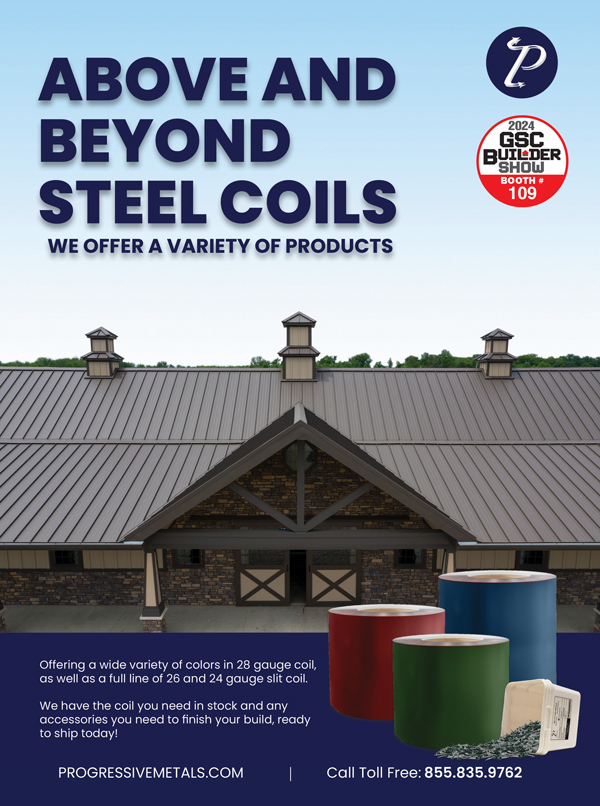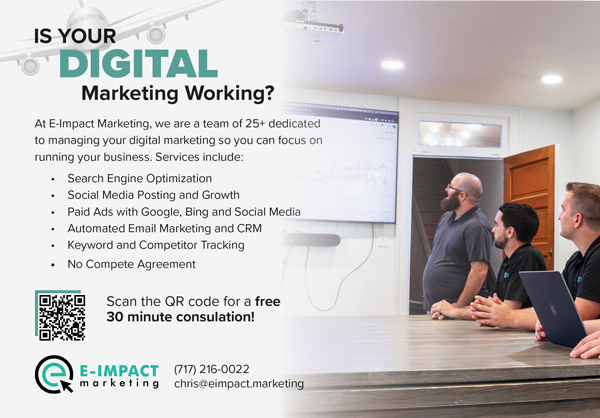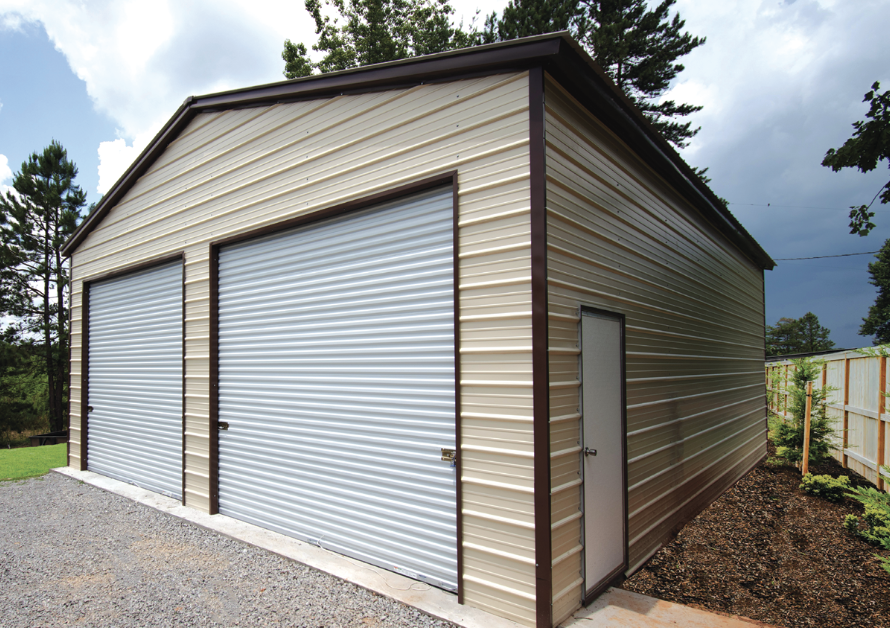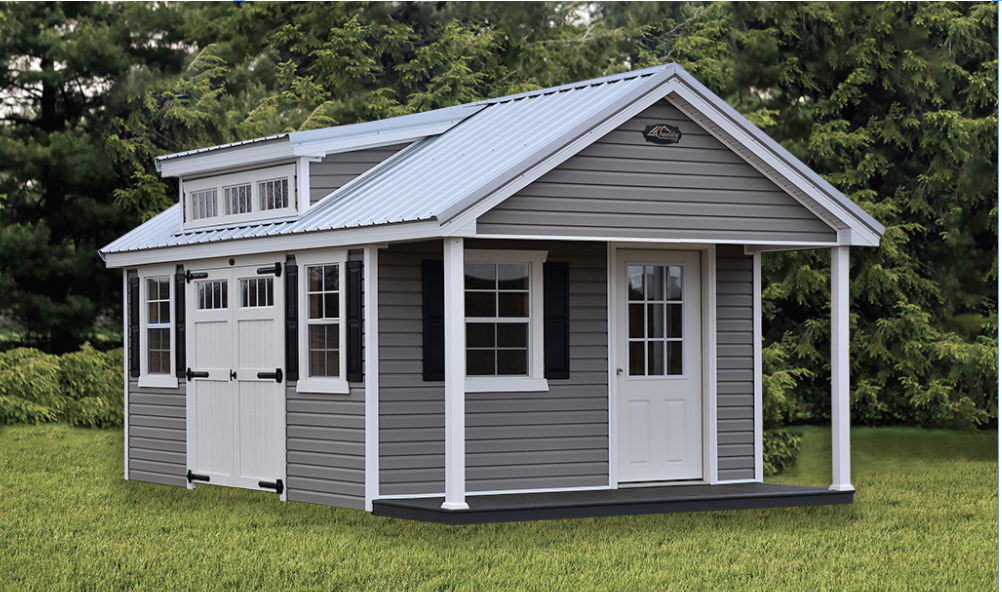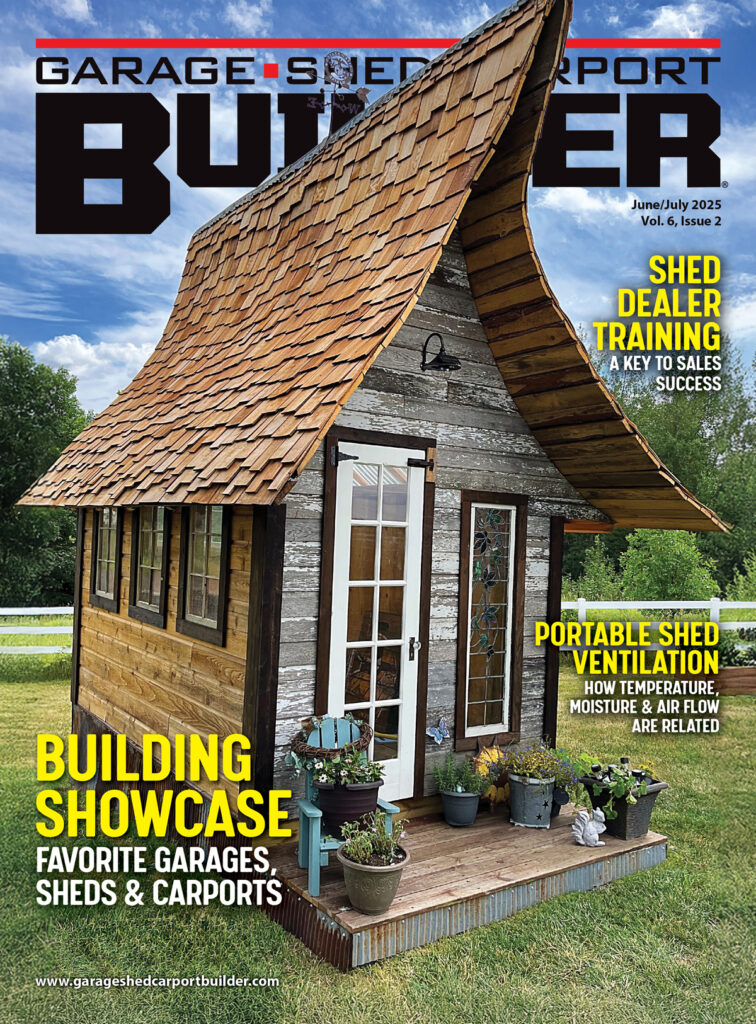Save Time, Increase Profits With Shed Design Software
by Karen Knapstein
You’re no doubt aware 2020 saw an increase in demand for backyard sheds. As homeowners worked (and continue working) remotely throughout the pandemic, they realized they could improve their lives with the addition of an accessory building or two. Their desire to add a carport, storage shed, or even a backyard office have fueled the increase in demand.
Odds are that when the consumer decided they wanted a backyard shed they didn’t jump in the car and start cruising around looking at shed lots. The growing trend is for consumers to begin their research online. A web-hosted online configurator allows that potential customer to determine what they want — and what they can get — for their budget. Without the pressure of having a sales person present, they can determine the size, type, material, and special details of the shed that will suit their needs. SmartBuild Systems and IdeaRoom are two Visual CPQ (Configure, Price, Quote) software options for configuring buildings.
SmartBuild Systems: From Post-Frame To Backyard Sheds and Garages
Keith Dietzen, CEO of Keymark Enterprises, developer of SmartBuild Systems, said that until a few years ago, there wasn’t a professionally built software design option that worked really well for post-frame builders. He explained, “There were a couple tiny companies that did some software that did some things, but the software was incomplete and didn’t work very well.”
To meet the needs of post-frame builders, Dietzen hit the road. He interviewed and visited post-frame builders and suppliers across the country to learn what they would need and want in building design software. His first trip, about 4 1/2 years ago, was a visit to Graber Post Buildings and A.B. Martin. “When we visited Graber Post we were accepted with open arms,” he said. “They brought in multiple teams to talk with me and see what I was planning. At that time, they were using one of the other software programs and were frustrated. After interviewing a bunch of companies and finding some were willing to commit financially ahead of time, we rolled up our shirt sleeves and started the work. We knew how to develop it and how to get it done. After two years of development, we started licensing the software about 2 1/2 years ago.”
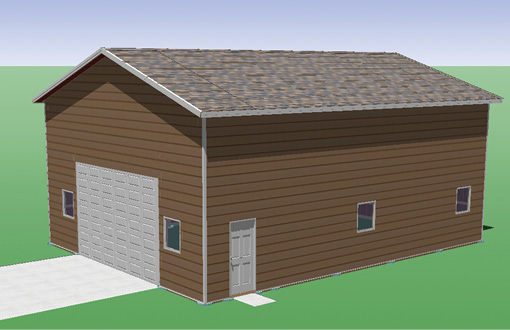
Customers can research and have most of the decisions made before they even meet with a sales representative or builder, which saves you time. Photo courtesy SmartBuild Systems
The software is a hit. “Now, we have two full-time people for customer support, we have eight people working full time on development, and three people full time in testing.” Through customer feedback, the development team identifies and prioritizes issues with the software. They are continually upgrading the software and have a new release every two weeks. Regularly scheduled webinars keep users apprised of the upgrades and changes.
How SmartBuild Licensing Works
Dietzen explained that while building companies can license the software directly from SmartBuild, there are some big advantages of getting it from a distributor.
The first advantage is that distributors enter and maintain the materials database. “For SmartBuild to run, it has to have a whole database of material. When a contractor buys from us, we’ll support them, but they have to enter their own data structure (the materials they use). Distributors have already done that.”
The second advantage is most distributors will subsidize the cost of SmartBuild. If a contractor hasn’t been buying from a given distributor, but can get SmartBuild from them, they may consider switching. A distributor might say, “If you buy your materials from me, I’ll provide SmartBuild to you.” Dietzen said it’s up to the distributor.
The third big advantage, Dietzen explained, is “because the contractor is now using an identical database, the backend processes can be automated. There’s no manual data entry or communication problems.” All the material details — color schemes, components, everything — are all hard-coded in. Material lists are all automatically generated, and pricing updates become automatic.
The web-based software reduces the average bid time for a post-frame building to just 20 minutes and drastically decreases errors. It automatically designs a 3D model and framing, updates changes — and prices — in real time, builds a cut list for sheathing and trim, generates construction drawings, and more.
Another benefit is the knitting together the supply community and the contractor. “It’s great for the supply community because it helps them grow their sales in a friction-free way. They put the design power in the contractor’s hands, which makes the contractor’s life easier. With SmartBuild, the contractor can sit down live with the customer and do a design. They can show the client in real time what they want. The client makes changes and they see the price changes live. At the end of the session, the contractor can push a button and generate a sales proposal. It’s a much more effective way for a builder to sell.
“The nice thing for the contractor,” Dietzen continued, “is when they get SmartBuild from the supplier, the supplier builds the inventory database and keeps it updated. The contractor’s pricing and inventory availability updates automatically.”
By this point you are probably asking, “What does this post-frame software have to do with my shed business?” Well, in early February, SmartBuild will be rolling out its 3D software for garage and backyard shed design.
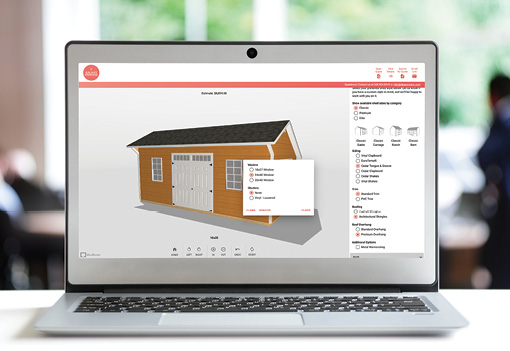
When consumers design the shed themselves, without the pressure of having a sales person present, they often upsell themselves. On average, consumer-designed sheds price out 15% higher than if a sales rep were walking a customer through the process.
Photo courtesy IdeaRoom
Dietzen said that some of their post-frame customers who also build sheds and garages have asked them to include things like shingles, vapor barrier, siding, and sub sheathing. “I told my team we have to do this, but we had our hands full with post frame. Once we got to the staff level we needed, we were able to turn our attention to garages and sheds,” he explained. The goal was to have it done in time to roll out at the [Garage, Shed and Carport Builders] show in South Bend in February. SmartBuild worked with a couple of shed companies to get the insights needed. “Classic Buildings in Missouri gave us a lot of help. They provided us with information that was useful in developing software that shed builders need.
“We’ll have this product ready to roll out at the beginning of February. After that, some time in 2021, we’ll also enhance SmartBuild and bring out a version that can be used for completely metal buildings. By the time we’re done, we’ll have the entire simple architecture market niche covered: post frame, metal buildings, sheds, and garages.”
IdeaRoom Grows Customer Base, Profit Margins For Shed Builders
Software developer IdeaRoom offers two products designed specifically for the backyard shed and carport industries: IdeaRoom for Sheds and IdeaRoom for Carports, respectively. Russ Whitney, co-founder and CEO of IdeaRoom, said he started doing product configurators about six years ago. He created a configurator for Studio Shed, an internet-only shed manufacturer that distributes nationally. After creating that branded configurator, which Studio Shed hosts on its website, www.studio-shed.com, “shed companies started coming out of the woodwork and wanted us to do the same for them,” he said.
After creating product configurators for several shed companies, he released a general one. Whitney said he has over 200 companies using the IdeaRoom configurators now, and is adding a lot more clients each month.
“We found we could add value for shed companies. When you’re selling products that you don’t have an exact example of, it’s challenging.” In part, it’s challenging because of the amount of time required to generate a proposal. “[Before it had the configurator,] Studio Shed would do two hours on every prospect drawing pictures. And they might have to revise it a few times,” Whitney said. “We talked to other shed companies, too. We found that companies included a hand-drawn picture of a shed on every order form. It was an inefficient and ineffective sales process. There’s a great opportunity for misunderstanding between the builder and consumer.”
There’s also an “instant gratification” element that comes into play. “Consumers don’t want to have to wait for an expert to respond to them about their shed,” Whitney explained. With the online configurator, the consumer can build their shed in the virtual world, try on options, see what it will look like, and see what it will cost ahead of time.
Whitney also said IdeaRoom’s 3D configurator solution has resulted in higher conversion rates for its customers and higher sale prices. “One of the first things we hear from clients when they use the configurator in their sales process is the average sale prices of the buildings goes up somewhere in the neighborhood of 15%. Consumers will upsell themselves when they know what the options are. They will optimize to their budget. If you’ve got a sales rep breathing down your neck, you’re in a defensive mode,” he continued. “There’s a different effect when you don’t have a salesperson there and you’re under no pressure and can explore all the options.” And it’s those added options that are usually the things that have a better margin.
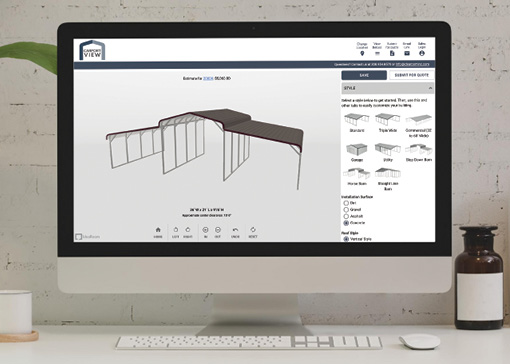
Consumers design their own metal-framed sheds and carports with the help of IdeaRoom for Carports. Hosting an online configurator is an invaluable tool for qualifying sales leads. Photo courtesy IdeaRoom
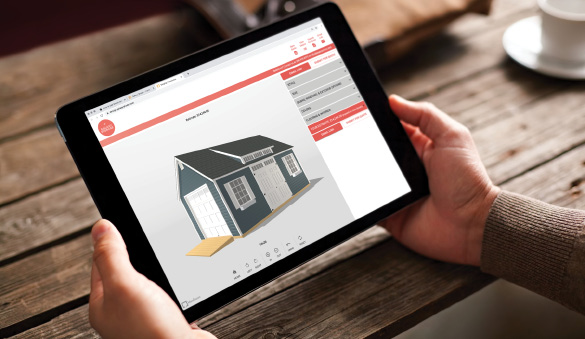
To serve the growing number of consumers who are purchasing online from mobile, make sure that the configurator you choose is mobile-friendly. Photo courtesy IdeaRoom
“Another factor affecting the sale price,” he explained, “is the rep is reluctant to suggest additional options because it will complexify the conversation. They’d rather close the deal [at a lower price] than optimize the deal. The sales rep may be thinking, ‘If I suggest to this customer they could insulate the building, then I’ve got to pause and figure that out. I might lose this customer.’” What Whitney has seen is when the sales rep is running the configurator with the client, they offer the client more options, which optimizes the sale.
Yet another important point to remember is the configurator will qualify your leads for you. Whitney pointed out, “The configurator answers the customers’ questions and keeps them engaged with your company. (Even if they’re not buying right now, they’ll save a design and visit it later.)” Since the customer now has their design, as well as the price, once they’re ready to call, message or visit your company, your sales reps are getting people who are pretty much ready to close; you and your reps aren’t wasting time with “tire kickers.”
Conclusion
Whitney said it’s important to remember the majority of consumers do a lot of research online before even speaking with a builder. They search online for a product that will meet their needs and wants; if they can’t find it, they get frustrated. “The consumer will go to a vendor who will provide them with the information they want,” he said.
If you host a shed configurator on your website, you can show that customer exactly what you can do for them and at what price. As a shed builder, it’s important for you to adapt the way you do business to meet your customers’ needs. GSCB


